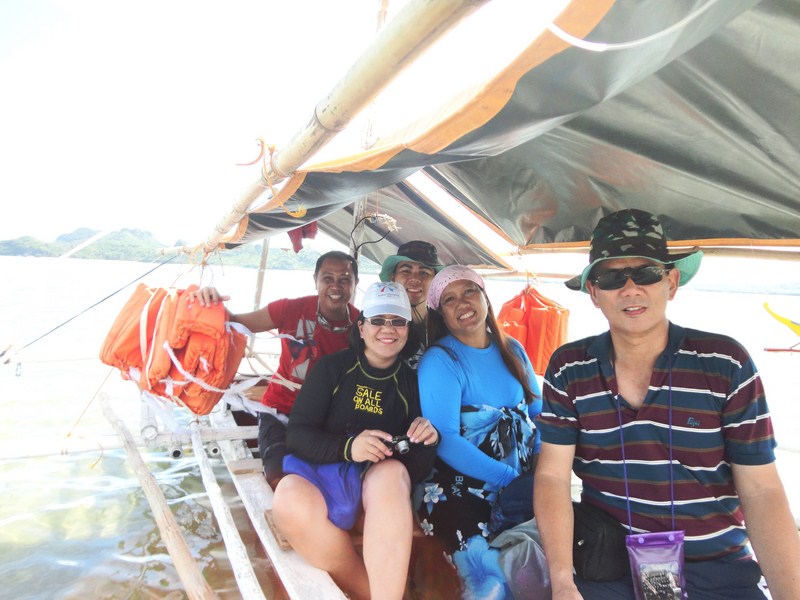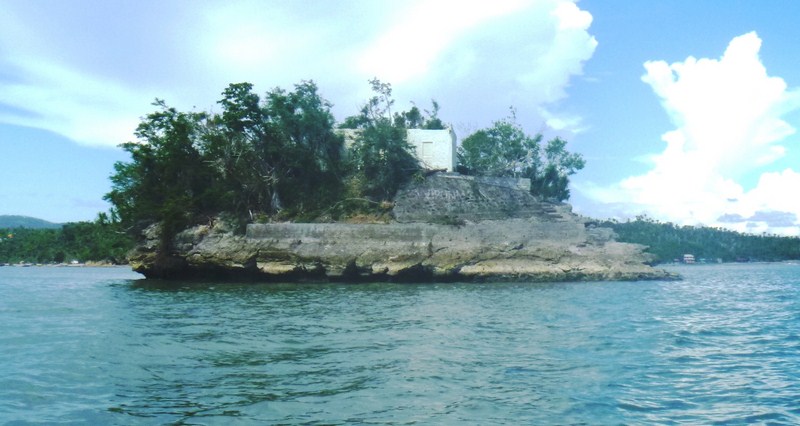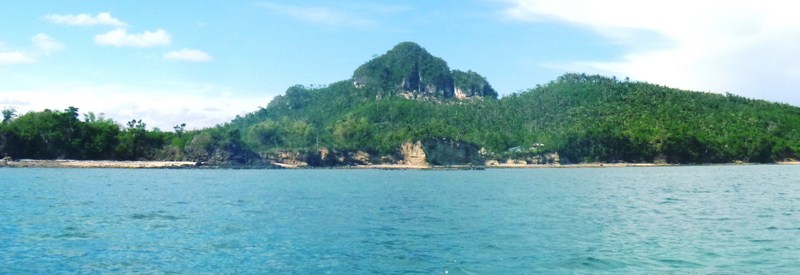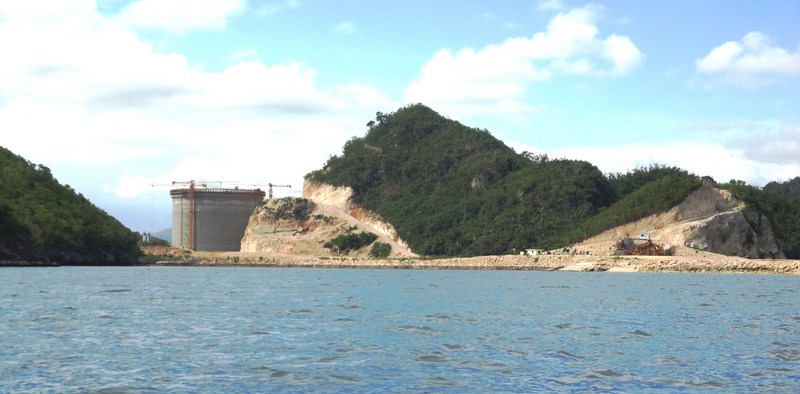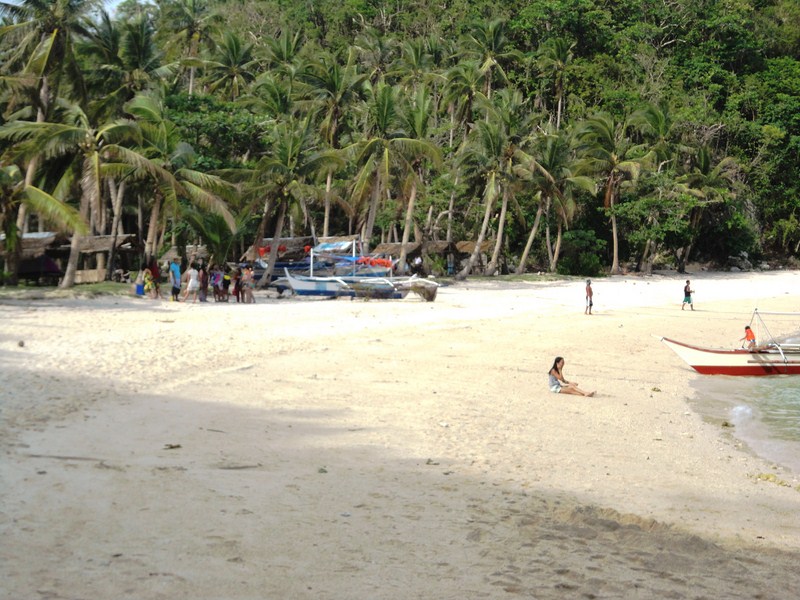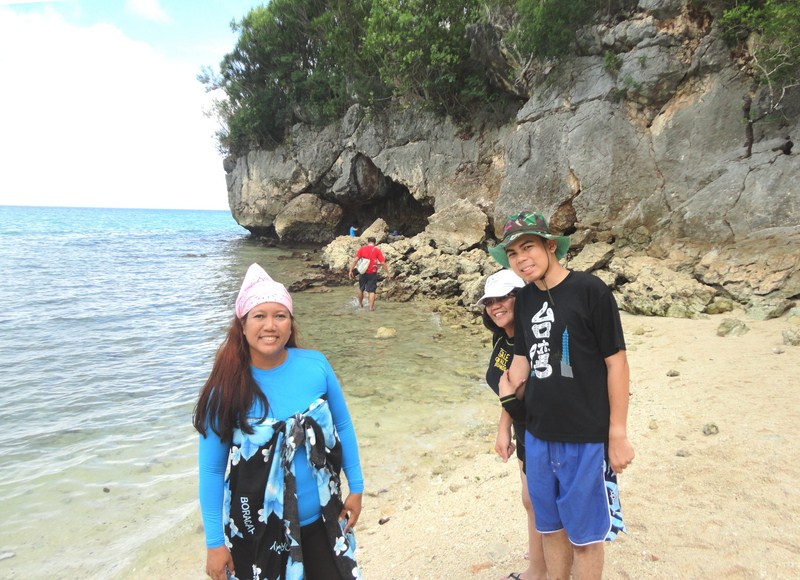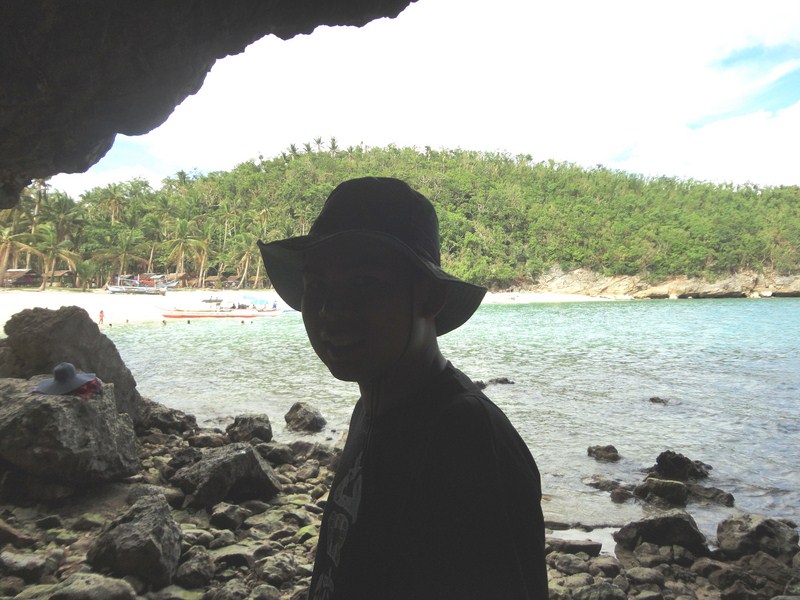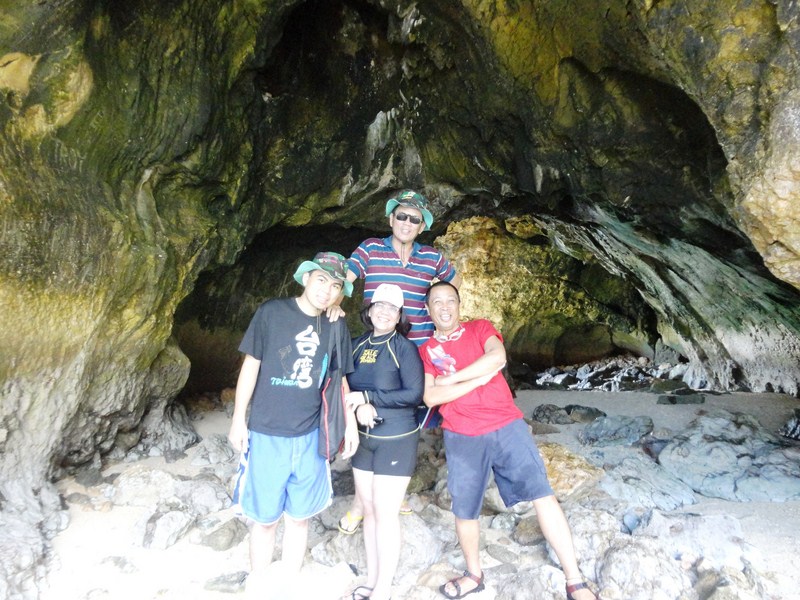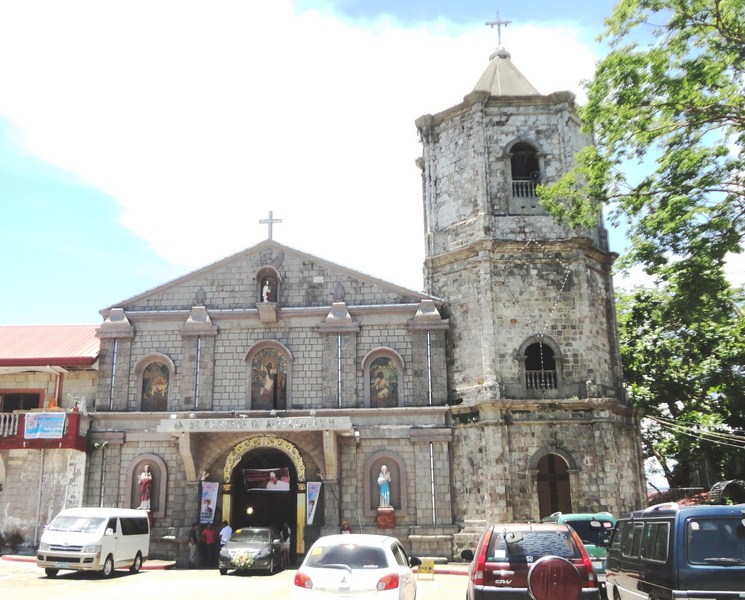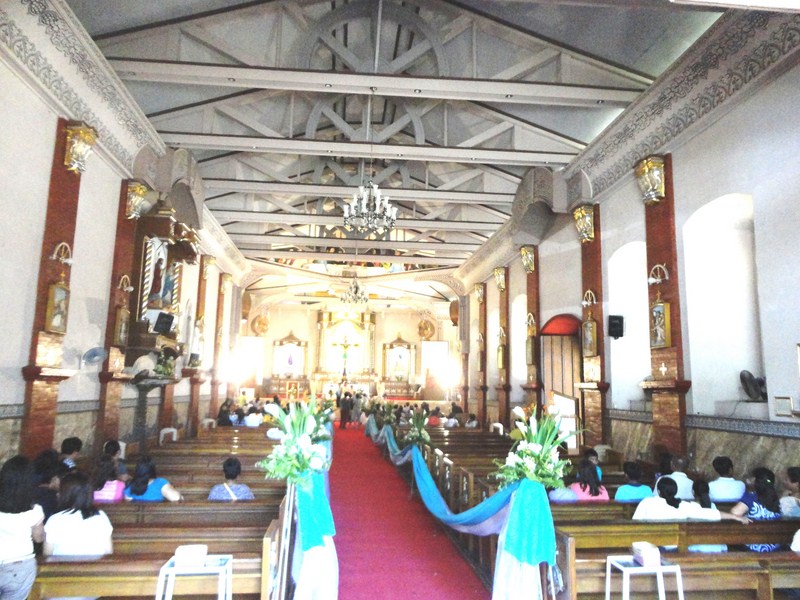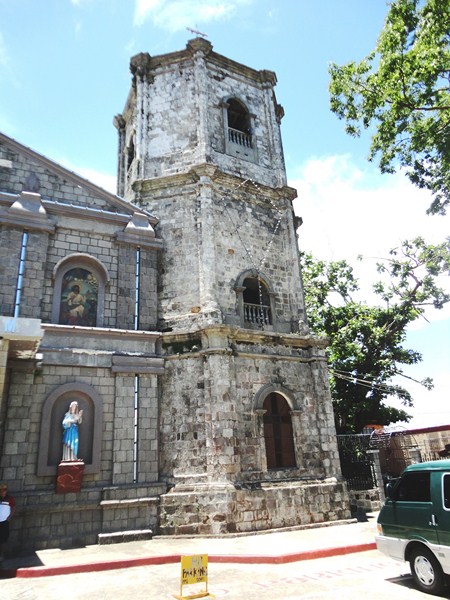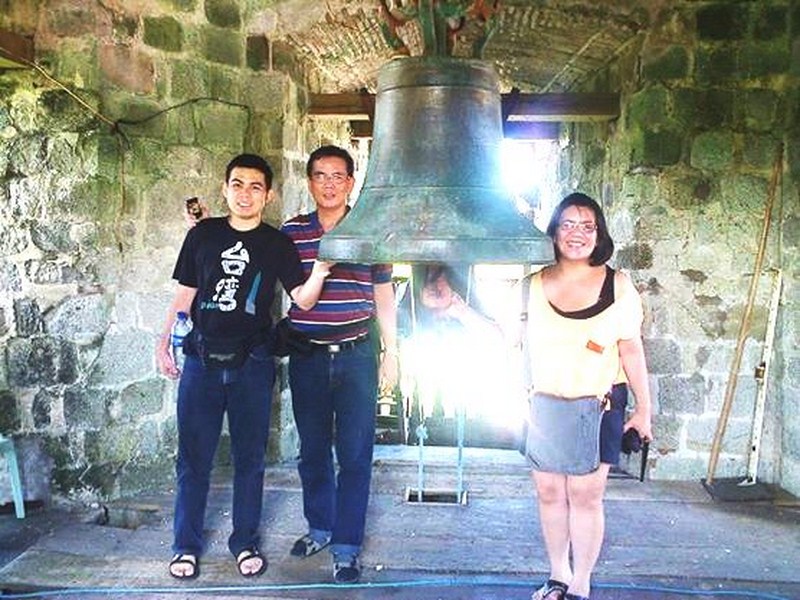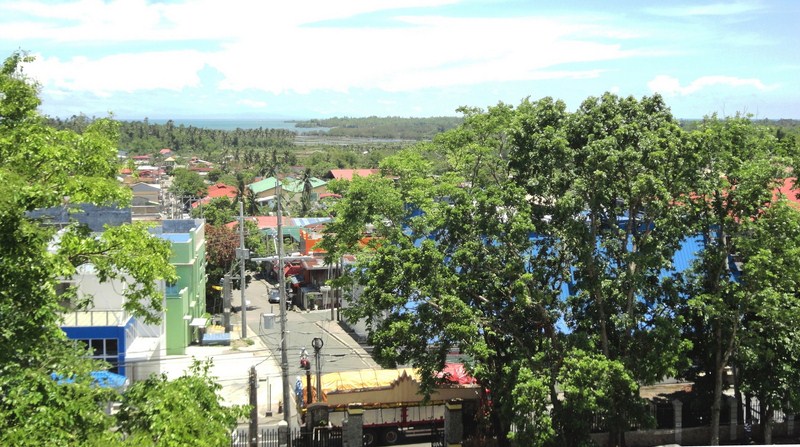Jandy, Maricar, Violet, Lanny and I have barely caught our breath upon arriving at Basiao Resort but, as it was still early in the afternoon, we decided to avail of a island hoping tour. Normally, it cost PhP1,800 for a day tour but, as we were doing it over 2 days, we were to pay PhP2,000. We had a choice of 3 islands – Dampalitan Island, Lipata Island and Pagbilao Grande Island.
The first two, part of Padre Burgos town, were just nearby so we chose the latter which was part of Pagbilao town. This wouldn’t be my first visit to the island, having done so during a media tour at Pagbilao a little over 4 months ago. However, this would be the first time I would leave for the island from Padre Burgos which is, distance-wise, nearer to the island than Pagbilao town.
For this island tour, we just donned our swimming attire. The boat trip took just 45 mins. Along the way, we passed the nearest of the Bagosina Islands, which had an unsightly roofless house (damaged by typhoon Glenda) on top.
We also passed the white sand beaches and towering rock formations of Lipata Island (site of Borawan Beach), one of our 2 island destinations scheduled for tomorrow (the other is Dampalitan Island).
At Pagbilao Grande Island, only the tall chimney of 735-MW Team (Tokyo Electrification and Marubeni) Energy coal-fired thermal power plant could be seen during our boat trip. We also saw the damage being done on the nearby hill, possibly to create a new road for the power plant. It wasn’t a nice sight.
We soon made landfall at the beautiful cove of the 70 m. long and 10 m. wide Puting Buhangin (which literally means “white sand”) Beach with its white sand, clear emerald waters and coconut trees. Unlike my first visit, the beach (also called Lukang Beach after the Lukang family) wasn’t as packed with picnickers and beachcombers.
However, we were more interested at the small, unique and tunnel-like Kwebang Lampas, located at one end of the beach, than with the beach itself. During my first visit, the waters inside the cave were waist deep and we didn’t venture to go out its seaside entrance. This time around, it was low tide and the cave floor was exposed. What’s more, we were able to venture out its seaside exit, below beautiful rock limestone formations, and enjoy the warm waters.
Back at our boat, we paid the mandatory PhP80 entrance fee per person (PhP400 for all five of us). It was now late in the afternoon when we returned to the mainland and our boat had to dock some distance from the shore as it was now low tide.
Puting Buhangin Beach: Pagbilao Grande Island, Brgy. Ibabang Polo, Pagbilao, Quezon.

